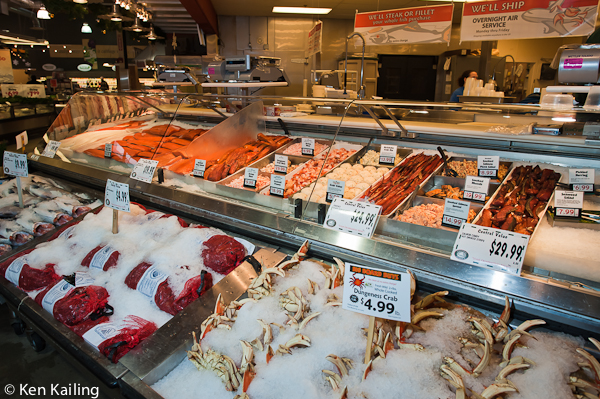If you live on the East Coast, West Coast, or Gulf Coast or even the Great Lakes, chances are you’re still able to get some fish caught wild in your coastal waters or freshwater inland “seas.” However if you’ve looked closely at the fish in your local supermarket – regardless of where you live – chances are you’ll find your fish originates from just about anywhere else in the world.
Fish is a critically important protein source around the world. We need to protect the heavily fished wild stocks and rigid controls on marine fish farms to prevent disease, pollution, and genetic contamination.
Finfish and shellfish are big business in Washington; in 2006, the annual “economic value” of commercial, tribal, and recreational fishing in Washington (including shellfish) reached $3.9 billion. The economic value includes “first sale” of catches, wages and personal income, and the multiplier effect from downstream spending after direct earnings are spent within the state.
The fishery eco-system includes the ocean, the atmosphere, the surrounding landscape, the fish and the food they eat, the fishermen who harvest them, the handlers who process the fish, the retailers who sell them, the chefs who cook them, and the consumers who eat them. Fish and fisheries are not separate from their eco-systems and the environment and must be managed as a whole.
So where does your favorite fish or seafood come from?
Shrimp is the most popular seafood eaten in the United States. It represents over 25% of the nation’s annual per capita seafood consumption; that comes out to about 4 pounds per person.[1] And where does it come from? Most of it is imported (95+%) and is grown in man-made ponds along the coasts of Thailand, Vietnam, Ecuador, and other tropical countries.[2]
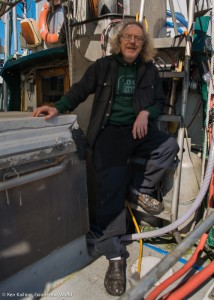
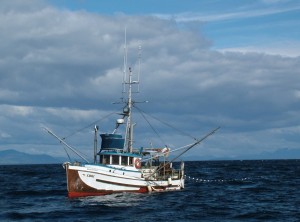
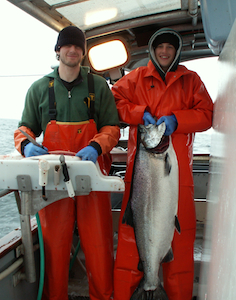 From left to right: Pete Knudson, F/V Nyord; the F/V Loki; Olin and Karl Martinson, F/V Constance
From left to right: Pete Knudson, F/V Nyord; the F/V Loki; Olin and Karl Martinson, F/V Constance
Salmon continues to rank high in finfish popularity at seafood markets, supermarkets, and restaurants. Full of healthy oils, salmon is considered a good food choice among consumers. The total “landings” (brought to shore before additional processing) of wild Pacific salmon topped one billion pounds, setting a new record in 2013, up 68% from 2012.[3]
Marine aquaculture in the US has been increasing steadily in recent years, about 10% a year from 2008 to 2012, the latest figures available. The top US marine aquaculture species are oysters, clams, and Atlantic salmon. Farmed salmon produced in the US is only a small fraction of the salmon consumed in the country; the majority of farmed salmon is imported from Canada, Chile, or Europe.[4]
For shellfish lovers, the news is bad. From Texas to Florida, the number of oysters harvested in the Gulf is the lowest on record. Since the Deepwater Horizon oil spill in the late spring of 2010, oyster production has gone into a steep decline.[5] Before the oil spill as much as 70% of the oysters consumed in the US were produced in the Gulf of Mexico. The Pacific shellfishery is now the largest producer in the US, however imported oysters (mostly canned and smoked) come from China and South Korea, while fresh or frozen oysters are imported from Canada.[6]
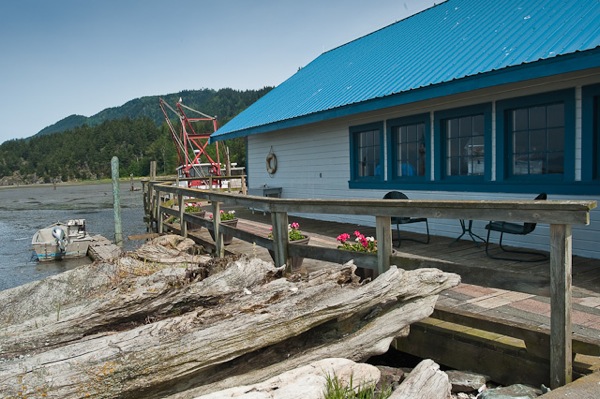 Taylor Shellfish Farm, Bow WA, restoring Pacific Oysters to Puget Sound
Taylor Shellfish Farm, Bow WA, restoring Pacific Oysters to Puget Sound
To save our wild and native seafood, we have to eat it.
Our real life-blood here in the Northwest is not reflected in the 50-plus-story glass and steel monoliths we build as edifices to airplanes, computer software, and forest and agricultural exports, they are comparatively short lived. Most are less than 100 years old and not likely to last another 100.
It’s the wild salmon and the intrinsic and indigenous human culture that goes back at least 10,000 years that hold us together in a web of life so intricate and adaptable it withstood the Ice Age. Wild salmon are without question the heart and soul of our region. But newcomers to Puget Sound aren’t told and most of the rest of the US can’t relate or doesn’t care.
American consumers have fallen into a food culture that values greasy breading and spicy sauce over the fish itself. Ironically, to keep our natural wild salmon fishery healthy and to sustain ourselves, we’ve got to eat them. Unfortunately, we don’t!
We don’t eat as much highly nutritious seafood as we should even when we live right on the water. Instead, when we do eat fish (just 14.5 pounds of fish and shellfish per person per year) we eat imported low-grade factory-farmed (soon to be genetically enhanced) salmon because it’s cheaper than wild salmon. It’s even dyed to appear more natural and mildly flavored enough to avoid challenging unsophisticated American palates. By eating imported farmed fish, we may even think we are saving Nature’s wild salmon.
Because salmon are anadromous – meaning they divide their lives between freshwater and the ocean: they are born in freshwater, mature at sea, and return to their natal streams to spawn a new generation – the protection of natural watersheds is vital. Instead they are being settled, lumbered, mined, you name it.
Corporate and industrial food businesses would like us to believe that if we eat easily managed, grown, and processed – albeit inferior quality – factory fish, we don’t need to support and protect the natural salmon ecosystem. It can be used more efficiently and economically for revenue-generating projects.
If that’s the case, then we don’t need any of what we’ve come to associate with our Northwest: not the wild fish; not their relatives, the indigenous Northwest people; not the pristine upper meadows, riverine forests, and grassy estuaries; not the best managed fishery left in the world; and certainly not the small commercial fisherman who sustain it. We can become just like everywhere else. Or not quite, our natural areas will become nothing more than real estate serving the very wealthy.
So where exactly does the remaining high-quality wild fish catch go? You guessed it! It’s sold to the highest bidder and exported. For example, nearly all Alaska sockeye is shipped to Japan frozen or exported canned to the UK.
The solution is simple: eat more wild fish! And even Washington’s Governor Inslee agrees we need to “eat more wild fish.” He believes we need to restore the food we get from the ocean as our own most promising secure food source in the face of climate change. We need to clean up Puget Sound and other vital waterways and restore a sustainable market for our local fish and seafood.[7]
Resources and Reading Material
[1] http://seafoodhealthfacts.org/seafood_choices/shrimp.php
[2] http://www.foodandwaterwatch.org/common-resources/fish/fish-farming/shrimp/
[3] http://alaskafisheries.noaa.gov/newsreleases/2014/seafood102914.htm
[4] http://www.fishwatch.gov/seafood_profiles/species/salmon/species_pages/atlantic_salmon_farmed.htm
[5] http://gulfseafoodnews.com/2014/04/21/gulf-oysters-at-zero-population/
[6] http://www.agmrc.org/commodities__products/aquaculture/oyster-profile/
[7] Protecting Wild Salmon Is the Right Thing to Do
Pete Knutson, Small Boat Fisherman
Do-It-Yourself Seafood Traceability
So Long, and Thanks For All the Fish
Puget Sound Shellfish at Risk
Fishy Fish Tales
Geoduck – Hard to Say, but Big Business!
Breakup of Farms into 5-acre Farmettes Puts Shellfish at Risk
Guess What Kind of Fish You’re Eating?
Have We Seen the End of Overfishing in US Waters?
A Tale of Two Fish – Which Would You Rather Eat?
Doing Business with a Handshake to Market Perfect Fish – Triad Fisheries
Catching the Perfect Fish
Fishing Vessel Constance, Sitka AK
Clamming Up in Washington
Taylor Shellfish Farms, Bow WA
Pacific Northwest Shellfish – Clean Water and Good Food

